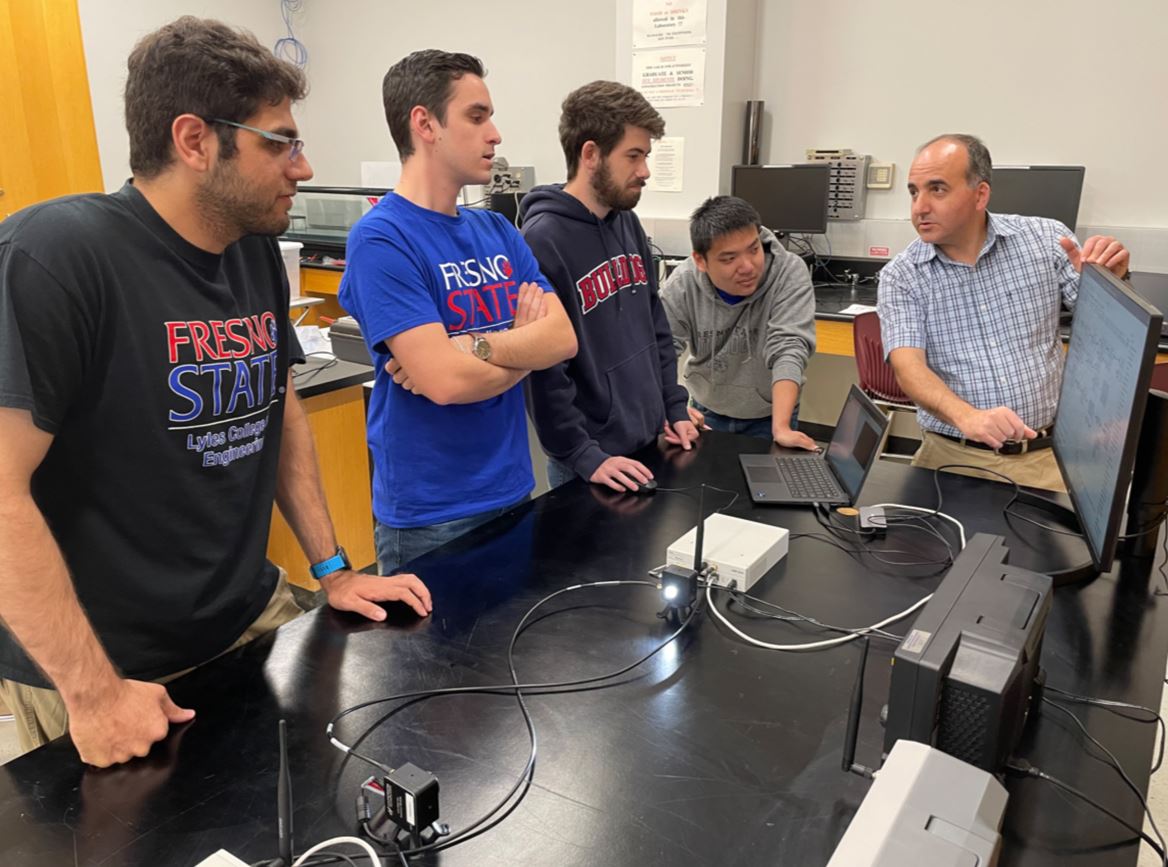Lyles College of Engineering
Engineering students selected to compete at national competition
Two student teams led by Dr. Hovannes Kulhandjian of the Electrical and Computer Engineering Department in the Lyles College of Engineering at Fresno State will compete in the Beyond 5G Software Defined Radios University Challenge April 27 through 29 in Dayton, Ohio.
In collaboration with the Air Force Research Lab, the Wright Brothers Institute hosts the annual challenge, designed so students can work together to develop solutions to sensing and networking problems using software-defined radios and software-defined networks.
Selected teams received software-defined radio kits along with training materials to help prepare for the challenge. The winning team or teams will receive cash prizes totaling $12,000.
“The research work conducted by our students on SDR-based RF fingerprinting and multi-user visible light communications can have a strong impact on the next generation of new technology developments that could be used by the military and commercial applications,” Kulhandjian said.
Students in Team One will demonstrate the capability of artificial intelligence-based radio frequency fingerprinting by identifying the trusted and unknown radio transmit sources in communications systems. Radio-frequency fingerprinting has many applications including military, which can be used to identify malicious attack-cloning radio frequency devices.
Students in Team Two will demonstrate a multi-user optical wireless communication system using SDRs. High data rate information is optical intensity modulated using visible light and transmitted through a light-emitting diode (at the receiver end a photosensor is used to decode the transmitted information).
Optical wireless communication, also known as light-fidelity or LiFi, has many useful applications including providing high data rate communications in airplanes, buses, medical facilities and indoor environments where there is a presence of LED overhead light sources. LiFi technology is more secure compared to WiFi as it is directional and reduces the chance of an intruder intercepting the communications.
Kulhandjian said he hopes the students will use the research and hands-on experience they gained from these projects and put them into practice in their careers and/or graduate studies.
For graduating electrical engineering student Vahae Ohanian, participating in the competition is an honor and validates the time and work that he and his team put into making this project come to life.
“We all firmly believe that what we are working on can have huge implications for the future, and to be able to showcase our steps to making that future a reality is an experience we were really striving for,” Ohanian said.
Fresno State’s two teams, one with joint work with the University of Massachusetts Boston, are among the 10 universities selected to compete at this year’s challenge alongside the University of Cincinnati, University of Houston, University of Massachusetts Dartmouth, North Carolina State University, Texas A&M Commerce, Worcester Polytechnic Institute and Wright State University.
The two projects were presented during the oral presentation piece of the 43rd Annual Central California Research Symposium. In addition, the team submitted a research paper to the Advanced Photonics Congress Conference, which will be held July 24-28 in the Netherlands.
“I think my favorite part of this project is demonstrating it on hardware and seeing the reactions on people's faces and being able to see and hear the excitement and wonder when they want to learn more about the technology,” Ohanian said. “Knowing that I was that person just a few months ago and being able to relive and share those feelings again with an audience is always such a blast and a cool byproduct of working with technology and theories that are not yet commonplace.”
For more information, contact Dr. Hovannes Kulhandjian at hkulhandjian@csufresno.edu or 559.278.3965
